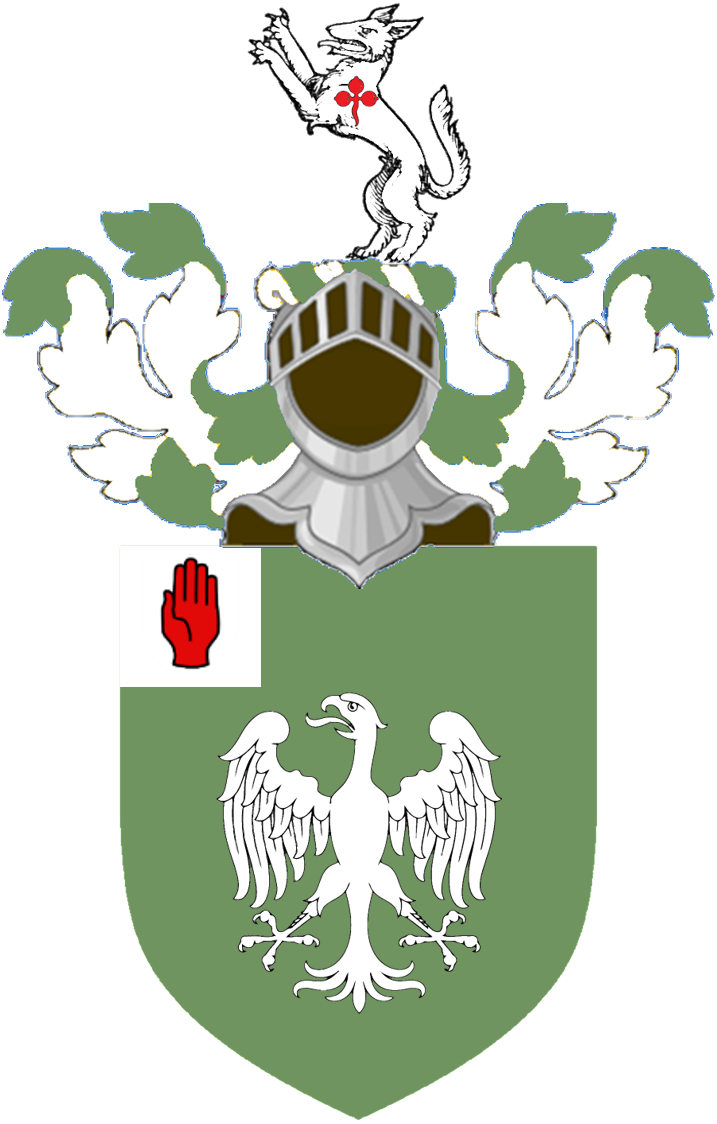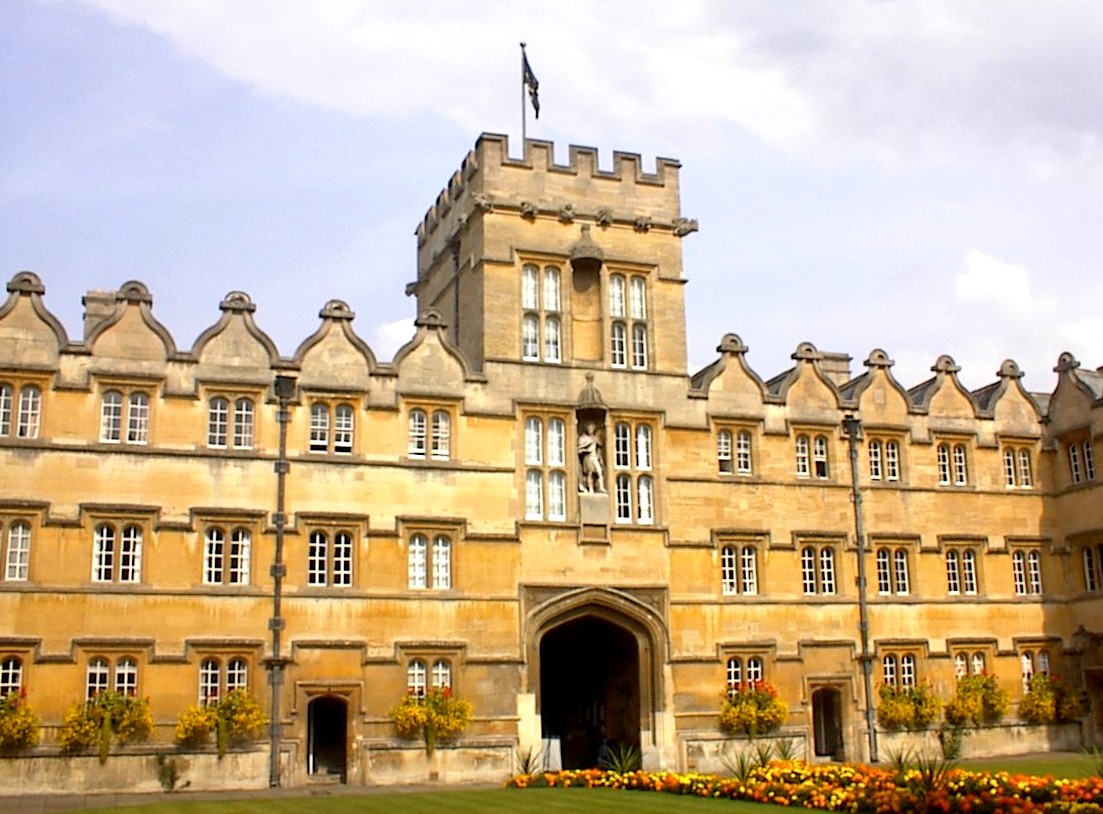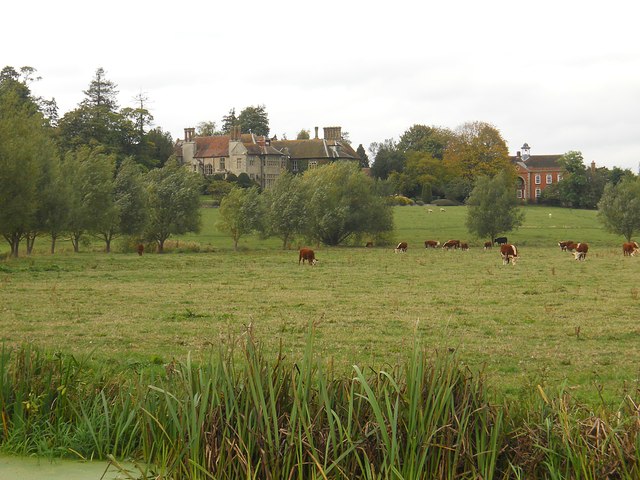|
Biddulph Baronets
The Biddulph Baronetcy, of Westcombe in the County of Kent, is a title in the Baronetage of England. It was created on 2 November 1664 for Theophilus Biddulph, of Westcombe Park, Greenwich, Kent, Member of Parliament for the City of London (UK Parliament constituency), City of London and Lichfield (UK Parliament constituency), Lichfield. His son, Michael, the second Baronet, also represented Lichfield in the British House of Commons, House of Commons. This line of the family failed on the death of the second Baronet's son, Theophilus, the third Baronet, in 1743. The late Baronet was succeeded by his first cousin once removed and namesake, Theophilus, the fourth Baronet. He was the son of Edward Biddulph, elder son of Simon Biddulph, younger son of the first Baronet. His grandson, Theophilus, the sixth Baronet, fought in the Battle of Waterloo and served as High Sheriff of Warwickshire in 1849. He was succeeded by his son, Theophilus, the seventh Baronet. He was a Deputy Lieutenant ... [...More Info...] [...Related Items...] OR: [Wikipedia] [Google] [Baidu] |
Biddulph Achievement
Biddulph is a town in Staffordshire, England, north of Stoke-on-Trent and south-east of Congleton, Cheshire. Origin of the name Biddulph's name may come from Anglo-Saxon/Old English ''bī dylfe'' = "beside the pit or quarry". It may also stem from a corruption of the Saxon/Old English Bidulfe, meaning "wolf slayer", and as a result the Biddulph family crest is a wolf rampant. In the days of coal and iron, Biddulph was actually called Bradley Green, with the original site of Biddulph being the area in which the parish church, Grange House, and the ruins of Biddulph Old Hall stand. It was not until 1930 that the town was marked on Ordnance Survey maps as 'Biddulph'. Geography Biddulph is located in a valley between the ridges of Mow Cop and Biddulph Moor to the east and west respectively. Biddulph also encompasses the hamlets of Gillow Heath, Knypersley and Brown Lees. Education In common with other parts of the area administered by Staffordshire LEA, the Middle School s ... [...More Info...] [...Related Items...] OR: [Wikipedia] [Google] [Baidu] |
Heir Apparent
An heir apparent, often shortened to heir, is a person who is first in an order of succession and cannot be displaced from inheriting by the birth of another person; a person who is first in the order of succession but can be displaced by the birth of a more eligible heir is known as heir presumptive. Today these terms most commonly describe heirs to hereditary titles (e.g. titles of nobility) or offices, especially when only inheritable by a single person. Most monarchies refer to the heir apparent of their thrones with the descriptive term of ''crown prince'' or ''crown princess'', but they may also be accorded with a more specific substantive title: such as Prince of Orange in the Netherlands, Duke of Brabant in Belgium, Prince of Asturias in Spain (also granted to heirs presumptive), or the Prince of Wales in the United Kingdom; former titles include Dauphin in the Kingdom of France, and Tsesarevich in Imperial Russia. The term is also used metaphorically to indicate a ... [...More Info...] [...Related Items...] OR: [Wikipedia] [Google] [Baidu] |
Sir Theophilus George Biddulph, 8th Baronet
''Sir'' is a formal honorific An honorific is a title that conveys esteem, courtesy, or respect for position or rank when used in addressing or referring to a person. Sometimes, the term "honorific" is used in a more specific sense to refer to an honorary academic title. It ... address in English language, English for men, derived from Sire in the High Middle Ages. Both are derived from the old French "Sieur" (Lord), brought to England by the French-speaking Normans, and which now exist in French only as part of "Monsieur", with the equivalent "My Lord" in English. Traditionally, as governed by law and custom, Sir is used for men titled as knights, often as members of Order of chivalry, orders of chivalry, as well as later applied to baronets and other offices. As the female equivalent for knighthood is damehood, the female equivalent term is typically Dame. The wife of a knight or baronet tends to be addressed as Lady, although a few exceptions and interchanges of these us ... [...More Info...] [...Related Items...] OR: [Wikipedia] [Google] [Baidu] |
Sir Theophilus Biddulph, 7th Baronet
''Sir'' is a formal honorific address in English for men, derived from Sire in the High Middle Ages. Both are derived from the old French "Sieur" (Lord), brought to England by the French-speaking Normans, and which now exist in French only as part of "Monsieur", with the equivalent "My Lord" in English. Traditionally, as governed by law and custom, Sir is used for men titled as knights, often as members of orders of chivalry, as well as later applied to baronets and other offices. As the female equivalent for knighthood is damehood, the female equivalent term is typically Dame. The wife of a knight or baronet tends to be addressed as Lady, although a few exceptions and interchanges of these uses exist. Additionally, since the late modern period, Sir has been used as a respectful way to address a man of superior social status or military rank. Equivalent terms of address for women are Madam (shortened to Ma'am), in addition to social honorifics such as Mrs, Ms or Miss. Etymolo ... [...More Info...] [...Related Items...] OR: [Wikipedia] [Google] [Baidu] |
University College, Oxford
University College (in full The College of the Great Hall of the University of Oxford, colloquially referred to as "Univ") is a constituent college of the University of Oxford in England. It has a claim to being the oldest college of the university, having been founded in 1249 by William of Durham. As of 2018, the college had an estimated financial endowment of £132.7m. The college is associated with a number of influential people, including Clement Attlee, Harold Wilson, Bill Clinton, Neil Gorsuch, Stephen Hawking, C. S. Lewis, V. S. Naipaul, Robert Reich, William Beveridge, Bob Hawke, Robert Cecil, and Percy Bysshe Shelley. History A legend arose in the 14th century that the college was founded by King Alfred in 872. This explains why the college arms are those attributed to King Alfred, why the Visitor is always the reigning monarch, and why the college celebrated its millennium in 1872. Most agree that in reality the college was founded in 1249 by William of Durham ... [...More Info...] [...Related Items...] OR: [Wikipedia] [Google] [Baidu] |
Birdingbury
Birdingbury is a village and civil parish in the Rugby district of Warwickshire, England, just south of the River Leam, and not far from Draycote Water. It is located roughly halfway between Rugby and Leamington Spa, about eight miles from each. According to the 2001 census it had a population of 327, increasing to 362 at the 2011 Census. History The village was recorded in the Domesday Book as ''Derbinggerie''. It was given to the Monks of Coventry by Leofric, Earl of Mercia. The village appears as ''Birbury'' on the Christopher Saxton map of 1637. Birdingbury today consists mostly of 20th century developments, but Birdingbury Hall dates back to the early 17th century, and was rebuilt in Jacobean style in the mid to late 19th century following a major fire, it is a grade II listed building. The current St Leonard's Church in the village dates from the late 18th century, but was enlarged in 1873. It is also grade II listed. Birdingbury once had a railway station, about a ... [...More Info...] [...Related Items...] OR: [Wikipedia] [Google] [Baidu] |
Birdingbury Hall
Birdingbury Hall is a 17th-century country house situated at Birdingbury, near Rugby, Warwickshire. It is a Grade II listed building and now serves as the head office of a commercial organisation. Details The manor of Birdingbury was held in ancient times by the Priory of Coventry. After the Dissolution of the Monasteries it was acquired by the Throckmorton family. In 1674 it was sold to Sir Charles Wheler Bt. and in 1687 to the Biddulph family. Parish records show the Hall to be owned by Thomas Blyth, lime and cement manufacturer, in 1891 through to his death in 1896. During this time, there were eight family members supported by resident teacher, cook, three house maids and two parlour maids. Prior to Birdingbury Hall, Blyth resided previously at Stockton House, Stockton, Warwickshire. The house was built in about 1630 but was extensively remodelled and rebuilt following a fire in 1859. The Jacobean style The Jacobean style is the second phase of Renaissance architectur ... [...More Info...] [...Related Items...] OR: [Wikipedia] [Google] [Baidu] |
Sir Michael Biddulph, 2nd Baronet
Sir Michael Biddulph, 2nd Baronet (c. 1652 – 20 April 1718), of Elmshurst, Staffordshire and Westcombe, Kent, was an English Whig politician who sat in the English and British House of Commons between 1679 and 1710. Early life Biddulph was the son of Sir Theophilus Biddulph, 1st Baronet and Susanna Highlord, Michael Biddulph. He was educated at St Paul's School and Christ's College, Cambridge. On 31 December 1673, he married Henrietta Maria Witley, daughter of Colonel Richard Witley, in Westminster Abbey in London. He succeeded to his father's baronetcy in April 1683. Career Biddulph stood for Parliament at Lichfield at a by-election of 1678,but was defeated in a hard-fought and costly contest. He was returned as Member of Parliament (MP) for Lichfield at the two general elections of 1679 and at the 1681 English general election. He did not stand at the 1685 English general election, but gave his interest to Thomas Orme. He regained his seat at the 1689 English general electi ... [...More Info...] [...Related Items...] OR: [Wikipedia] [Google] [Baidu] |
Baron Biddulph
Baron Biddulph, of Ledbury in the County of Hereford, is a title in the Peerage of the United Kingdom. It was created on 1 August 1903 for the banker and politician Michael Biddulph, 1st Baron Biddulph, Michael Biddulph. He was a partner in the London banking firm of Cocks Biddulph, Cocks, Biddulph and Co and also sat in the British House of Commons, House of Commons for Herefordshire (UK Parliament constituency), Herefordshire as a Liberal Party (UK), Liberal from 1868 to 1885 and for Ross (UK Parliament constituency), Ross from 1885 to 1900 as a Liberal Unionist. His father Robert Biddulph (MP), Robert Biddulph had previously represented Hereford (UK Parliament constituency), Hereford in Parliament while his younger brother Robert Biddulph (governor), Sir Robert Biddulph was Governor of Gibraltar. the title is held by the first Baron's great-great-grandson, the fifth Baron, who succeeded his father in 1988. In 1978 he assumed the additional surname of Maitland, which is the mai ... [...More Info...] [...Related Items...] OR: [Wikipedia] [Google] [Baidu] |
Michael Biddulph, 1st Baron Biddulph
Michael Biddulph, 1st Baron Biddulph Justice of the Peace, JP Deputy Lieutenant, DL (17 February 1834 – 6 April 1923), was a British banker and Liberal Party (UK), Liberal, later Liberal Unionist, Member of Parliament (United Kingdom), Member of Parliament (MP). Early life Biddulph was the eldest son of Robert Biddulph (MP), Robert Biddulph and his wife Elizabeth (née Palmer), daughter of George Palmer (MP for South Essex), George Palmer MP, of Nazeing Park in Essex. Among his siblings was Robert Biddulph (British Army officer), Sir Robert Biddulph, a General in the Army, Colonel John Biddulph, who served in India, and George Tournay Biddulph, who also worked for the family banking firm. After his mother's death, his father married his second cousin, Lady Sarah Wilfreda Palmer, daughter of Roundell Palmer, 1st Earl of Selborne, Earl Selborne and they lived at Douglas House, Petersham, Douglas House, Petersham, London, Petersham. Biddulph was educated at Harrow School, Harrow. ... [...More Info...] [...Related Items...] OR: [Wikipedia] [Google] [Baidu] |
Justice Of The Peace
A justice of the peace (JP) is a judicial officer of a lower or ''puisne'' court, elected or appointed by means of a commission ( letters patent) to keep the peace. In past centuries the term commissioner of the peace was often used with the same meaning. Depending on the jurisdiction, such justices dispense summary justice or merely deal with local administrative applications in common law jurisdictions. Justices of the peace are appointed or elected from the citizens of the jurisdiction in which they serve, and are (or were) usually not required to have any formal legal education in order to qualify for the office. Some jurisdictions have varying forms of training for JPs. History In 1195, Richard I ("the Lionheart") of England and his Minister Hubert Walter commissioned certain knights to preserve the peace in unruly areas. They were responsible to the King in ensuring that the law was upheld and preserving the " King's peace". Therefore, they were known as "keepers of th ... [...More Info...] [...Related Items...] OR: [Wikipedia] [Google] [Baidu] |







_Achievement.png)
